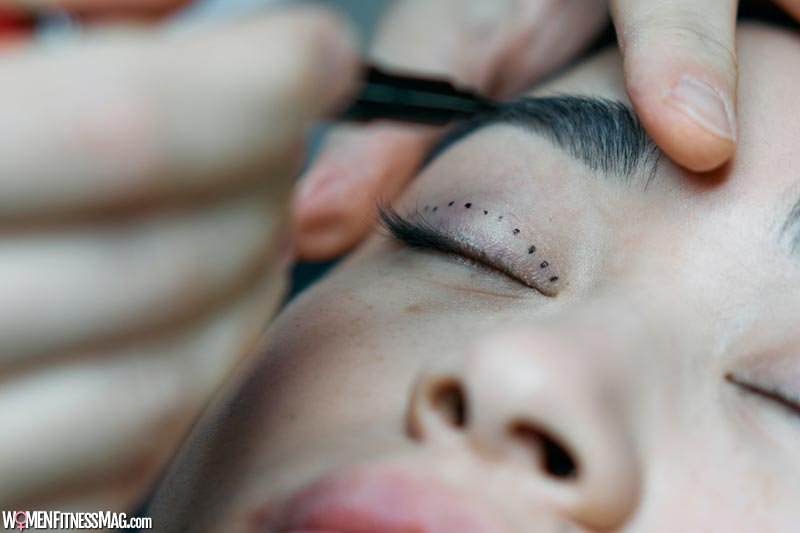Your Comprehensive Guide to Eyelid Surgery : They say that your eyes represent your soul’s strength and your body’s vitality. The eyes are among the first facial features most people will notice about you. Generally, symmetric, bright, and alert eyes are crucial features of a great-looking face.
Unfortunately, age, stress, and bad living habits can take a tremendous toll on your eyes, causing puffiness, loose, sagging skin around the eyelids, and, sometimes, vision problems. But all is not lost.
Eyelid Surgery (Blepharoplasty) 101
Also known as blepharoplasty, eyelid surgery is a procedure aimed at lifting and tightening saggy skin surrounding your eyelids’ upper and lower parts. This procedure can have a significant effect on your face, make you feel alert, and boost your confidence.
Who Might Need Eyelid Surgery?
Most people are confused about whether they are good candidates for blepharoplasty, especially if they are quite young and starting to notice aging signs in their eyes. If you stare in your mirror and appear sad, tired, and sleepy, with heaviness and bagginess around your eyes, it might be time to evaluate eyelid lift options. The best candidates for this procedure include:
- People without severe eye conditions
- Healthy people without medical issues that might impact their healing
- Non-smokers
- Individuals with realistic goals and expectations
Note that you are not a good candidate for an eyelid lift surgery if you struggle with chronic dry eye, circulation disorders, hypertension, heart disease, thyroid disorders, or diabetes.
Additionally, patients with glaucoma are advised to consult their doctors to determine whether the procedure is safe. Eyelid surgery can be done alongside another procedure, such as a facelift, brow lift or skin resurfacing.
What Happens During Eyelid Surgery?
There are three types of eyelid surgery. Generally, the procedure you will need will vary based on factors such as the shape of your eyes and general health conditions. Here are some of the procedures that your doctor might recommend:
Upper Eyelid Surgery
This procedure primarily aims to improve your eyes’ appearance and vision. It mainly focuses on the upper eyelid. The surgeon will make a small incision along the fold of your upper lid and remove the excess skin, muscles, and sometimes fat before closing the cut.
Upper eyelid surgery drastically restores the functions of your eye and gives it a more rounded, gorgeous appearance.
Lower Eyelid Surgery
The surgery mostly focuses on the lower eyelid. The doctor makes a small incision below the lashes inside the lower eyelid or on your eye’s natural crease. Your surgeon will then remove or redistribute the excess muscle, fat or saggy skin. This procedure aims at eliminating saggy eyes and wrinkles on the skin around the eyes, significantly improving their appearance.
Double Eyelid Surgery
During this procedure, the doctor made a crease in the upper eyelid, creating a bigger, wider-looking eye. This is one of the most common eye procedures in East Asia.
When you can have a blepharoplasty procedure at any time. However, if you aim to correct visible signs of aging, you can get the best results once you hit forty years. For best results, find a renowned and experienced facial plastic surgeon specializing in eyelid surgery. It is also best if they have a dedicated clinical support team to guide you through your recovery process.
Frequently Asked Questions
How do I know that I need eyelid surgery?
You might be a candidate for eyelid surgery if you have the following:
- Bags under the eyes
- Excess skin or wrinkles in the lower eyelids
- Droopy lower eyelids
- Saggy upper eyelids and a distinct hang over your eyes
- Excess skin on your upper eyelids eventually impairs your vision
What are the possible side effects of eyelid surgery?
After surgery, you will remain in the recovery room for some hours as the medical staff monitor your condition. You can then leave later to recover at home. After the procedure, you might temporarily experience the following:
- Watery eyes
- Blurred vision mostly from the lubricating ointment used during the procedure
- Double vision
- Light sensitivity
- Slight pain and discomfort
- Bruising and a swelling that resembles black eyes
- Puffy numb eyelids
The incisions are invisible since they are hidden under the natural folds of your eyelids, below the lower lash line or inside the lower lid. Once they heal, the cuts are indetectable.
What is the recovery time for eyelid surgery?
Generally, the recovery time for blepharoplasty ranges from one week to a month (four weeks). To hasten recovery, you can:
- Use prescribed ointments or ointments
- Place ice packs on your eyes for at least 10 minutes per hour the night after the procedure
- Wear darker sunglasses to protect the skin around your eyelids from too much wind and sunlight
- Sleep with your head position raised slightly higher than your chest for several days post-surgery
- Be sure to seek immediate medical help if you experience chest pain, shortness of breath, severe pain, unusual heart rate, or bleeding.
Related Videos about Your Comprehensive Guide to Eyelid Surgery :
Your Comprehensive Guide to Eyelid Surgery
blepharoplasty, how to qualify for eyelid surgery, upper eyelid surgery cost, eyelid lift without surgery, droopy eyelid surgery, how to get insurance to pay for eyelid surgery, hooded eyelids surgery covered by insurance,




